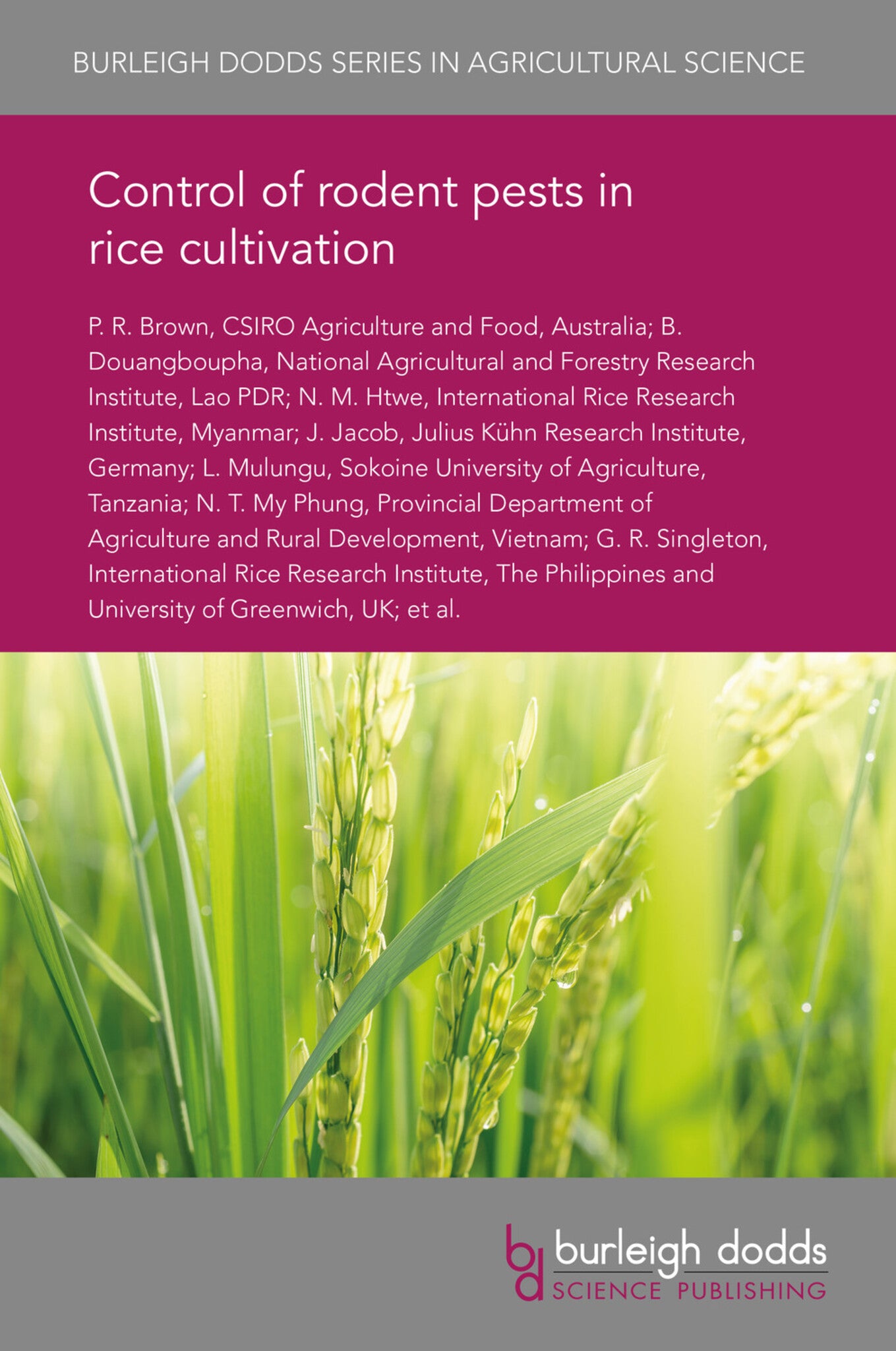We're sorry. An error has occurred
Please cancel or retry.
Control of rodent pests in rice cultivation
P. r. brown,
B. douangboupha,
N. m. htwe,
J. jacob,
L. mulungu,
View More
N. t. my phung,
G. r. singleton,
A. m. stuart
Regular price
£25.00
Sale price
£25.00
Regular price
£25.00
Unit price
/
per
Sale
Sold out
Re-stocking soon
Rodents cause significant damage to rice crops at all stages. The intensity of rice cropping and the level of asynchrony of cropping affects the level of rodent losses. It is important to understan...
Read More

Some error occured while loading the Quick View. Please close the Quick View and try reloading the page.
Couldn't load pickup availability
- Format:
-
31 May 2017

Rodents cause significant damage to rice crops at all stages. The intensity of rice cropping and the level of asynchrony of cropping affects the level of rodent losses. It is important to understand the biology of rodent species causing damage in order to develop appropriate management strategies. This chapter examines the impact of rodents on rice and comprehensively surveys physical, chemical, biocontrol-based and other methods of rodent management. Case studies of ecologically based rodent management in Vietnam, Laos and Tanzania form the background to the chapter’s assessment of the future for control of rodents and other vertebrate pests affecting rice production.

Price: £25.00
Publisher: Burleigh Dodds Science Publishing
Imprint: Burleigh Dodds Science Publishing
Series: Burleigh Dodds Series in Agricultural Science
Publication Date:
31 May 2017
ISBN: 9781838792480
Format: eBook
BISACs:
TECHNOLOGY & ENGINEERING / Agriculture / Sustainable Agriculture, Pest control / plant diseases, TECHNOLOGY & ENGINEERING / Agriculture / Agronomy / Crop Science, TECHNOLOGY & ENGINEERING / Pest Control, Sustainable agriculture, Agronomy and crop production

1 Introduction 2 Rodent impacts on rice 3 Rodent pests of rice and their biology 4 Rodent management methods 5 Case studies of management of rats in rice 6 Other vertebrate pests in rice 7 Future trends and conclusion 8 Where to look for further information 9 References



